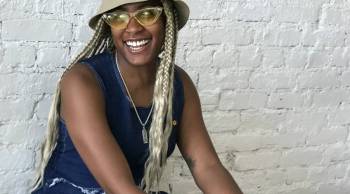Kai Ryssdal: This is — almost all the time — a family radio program. And the next four or so minutes aren’t gonna stray from that.
But on the theory that forewarned is forearmed, here goes: We have a certain cultural obsession with breasts. Psychologically, socially, sexually — you name it.
And people might giggle, but Florence Williams is dead serious. Her new book is called “Breasts: A Natural and Unnatural History.” Florence Williams, welcome to the program.
Florence Williams: Thanks for having me.
Ryssdal: I say this literally with a straight face, but I think it’s the right place to start: Breasts in this country aren’t what they used to be, right? They’re bigger, they’re more engineered, women are getting them younger. It’s not the way it was when we were kids.
Williams: It’s true. Breasts are one of our organs that have really changed over the generations. I talked to someone at Maidenform who said that the average breast size used to be a 34B. And now it’s closer to a 34C, and pushing upwards toward a D. And this is new.
Ryssdal: The subtitle is “a natural and unnatural history,” but it’s really, you say in the book, an environmental history of breasts. Explain what that means, would ya?
Williams: Breasts are very environmentally sensitive. For example, breasts are filled with estrogen receptors. And so, breast cells are really attuned to estrogen and they’re designed to really pick them up. And that’s how breasts know, for example, when to grow in puberty, through these environmental cues.
And now, in our modern life, we are really surrounded by industrial chemicals that mimic estrogen. And so, breasts are arriving earlier. The average age for breast budding now is about nine or 10, and even younger. This is something that a lot of parents are concerned about, because when young girls get big breasts earlier, it really changes the way their peers treat them and it’s also a risk for breast cancer later on.
Ryssdal: You actually were breastfeeding your children, right, one of your children when you were reading some article about the toxins you find in breast milk?
Williams: I was. And I actually nursed out a sample of my breast milk and I sent it to a lab in Germany. And it turns out I had pretty high levels of flame retardants and I also had some pesticides in my breast milk. We actually have no idea where these chemicals are coming from. Are they in my office equipment? Are they in my roofing tiles? We just really don’t know. And that’s because products in the marketplace that we buy are not required to be labeled. As a parent, it’s really frustrating, because I realize that we really can’t control our exposure very much.
Ryssdal: Did you — asking delicately, as you can — did you think much about your breasts before you became a mother, before they actually had this utilitarian purpose?
Williams: You know, it’s funny, I really didn’t think that much about them. It wasn’t until I started breastfeeding that I became aware of how complicated breasts are.
One problem, of course, is that women often are ashamed of breastfeeding. And in our culture, anyway, we’re not really supposed to breastfeed in public; when we do, we run into all sorts of problems. And that’s, of course, such a huge change from how we evolved, where breasts were literally just hanging out all over the place and were used to feed infants during a woman’s reproductive life span. And so we don’t really support breastfeeding enough as a culture, we don’t support it enough in the workplace. For a lot of women, it’s just too much to handle and I totally respect that.
Ryssdal: Florence Williams, her book is called “Breasts: A Natural and Unnatural History.” Thanks a lot.
Williams: Thanks for having me.
There’s a lot happening in the world. Through it all, Marketplace is here for you.
You rely on Marketplace to break down the world’s events and tell you how it affects you in a fact-based, approachable way. We rely on your financial support to keep making that possible.
Your donation today powers the independent journalism that you rely on. For just $5/month, you can help sustain Marketplace so we can keep reporting on the things that matter to you.


















